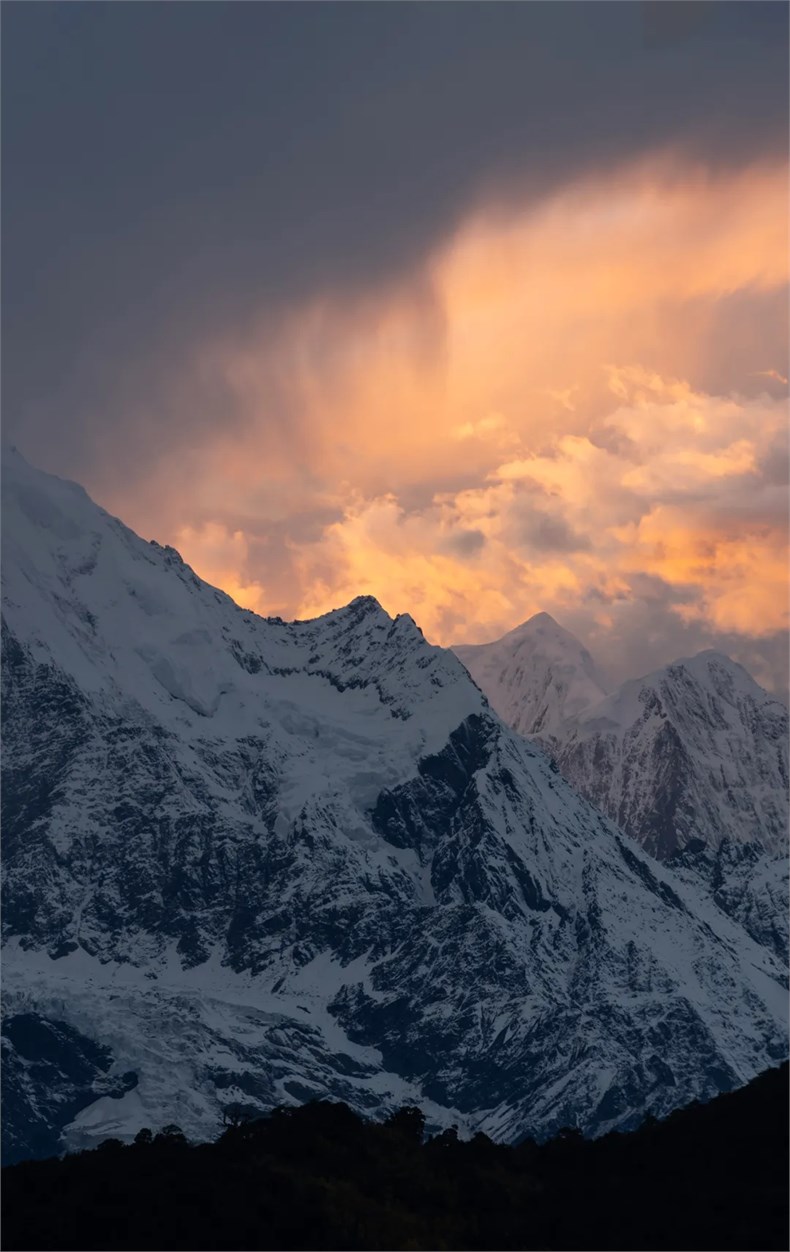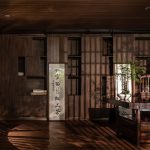Snow Mountain Hotel: Golden Mountain Bathed in Sunlight
Wu Bin has crafted numerous “homes,” perceiving houses as a kind of “spiritual acknowledgment” that shelters both body and soul. Recently, he spearheaded the interior design of a snow mountain hotel, a project that spanned three years, creating a “home” amidst the snowy peaks.
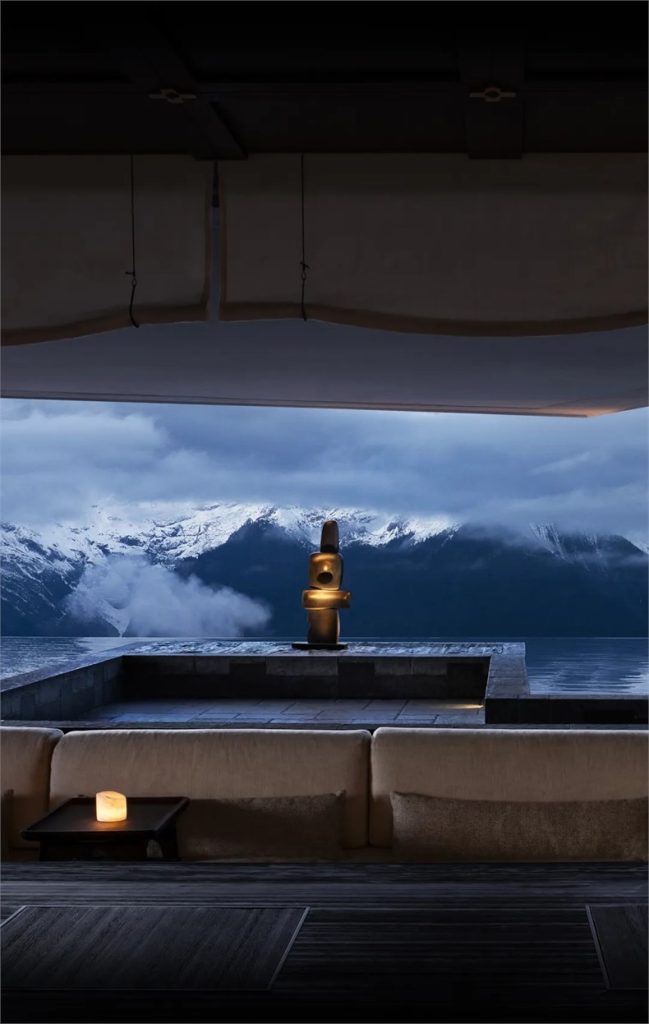
After flying into Shangri-La Diqing Airport, we followed the Yunnan-Tibet Highway, crossed Baima Snow Mountain, and arrived at Wunongding in Deqin Meili at an altitude of 3600 meters. Gazing at the distant snowy mountains felt like stepping into a traditional landscape painting—vivid yet unreachable.
The ancient highland night was an expanse of darkness—cold, silent, and heavy. The silhouette of Meili Snow Mountain under the cold light and that fleeting moment when sunlight kissed its peaks with golden hues held a profound power within moments of personal realization. Those with faith found their true selves here.
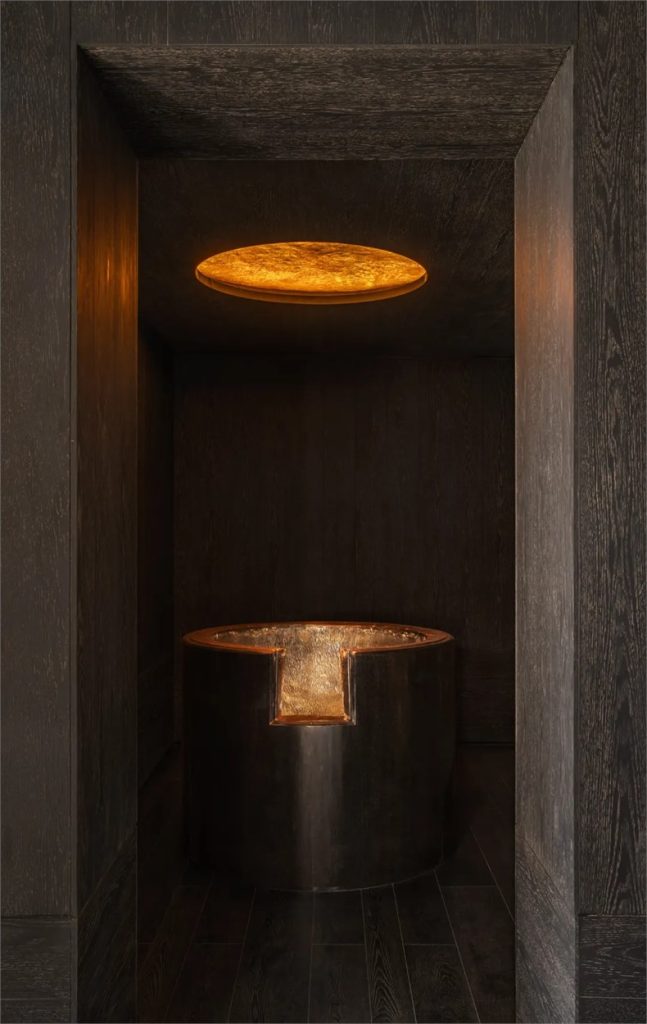
Creating an immersive hotel experience that fulfills people’s longing to witness the Golden Summit of Meili Snow Mountain—Meili Resort. Wu Bin describes this project as “My Home in the Snow Mountain,” serving as a “home” for travelers, designers, and the Golden Summit itself.
When hotels evolve from being mere rest stops in travel to becoming the focal point of a journey; when they are intricately connected with the concept of a “destination” and transform into lifestyle experience hubs, how does design respond to this shift?
Local elements are seamlessly woven into the design: yak bells, felt textures, a cozy fireplace, and black pottery items. These everyday snippets emit a tranquil glow within the crevices of modern civilization, inviting us to pause and savor the moment.
The biting cold, intense sunlight, howling winds and snowstorms, and rugged mountain peaks—realities often shielded by modern life—are reintroduced to us. From them, we rediscover boundless depth and beauty.
Entrance|Opening the door unveils the breathtaking Meili Snow Mountain. The space, enhanced by Diwang International Flooring’s light-colored wood floors, creates a deep and restrained harmony with nature, elevating the sacred atmosphere.
Tourists versus travelers—the former rush homeward while the latter wander without a set path. Travel goes beyond mere stops and passages; it connects one’s inner self with the world. Hotels now serve as “homes” during journeys, surpassing their basic function of lodging to offer emotional refuge.
Extreme cold, blazing sunlight, fierce snowstorms, and towering peaks—many aspects of reality shielded by modern life are rediscovered here, revealing endless layers of beauty and wonder.
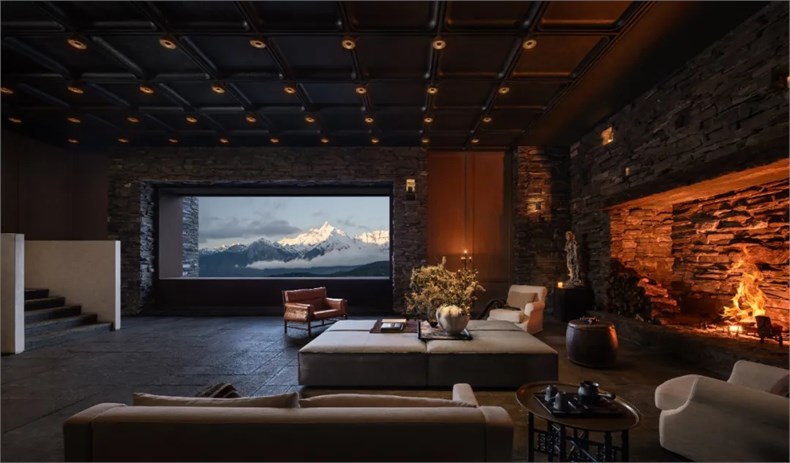
Entering the lobby and passing through the reception hall, you ascend the central staircase. Circling around the restaurant bar and club, you wander through the art gallery and rooftop terrace before returning to your guest room. The spaces unfold one after another, subtly awakening all five senses with each transition.
Tourists are often eager to return home, while travelers have no fixed destination. Travel isn’t just about staying or passing through; it’s about connecting one’s inner self with the world. Hotels are evolving into “homes” for people on their journeys, providing more than just accommodation—they offer a place for emotional respite.
Experiencing extreme cold, intense sunlight, fierce snowstorms, and towering peaks—all these elements often kept at bay by modern life—are being rediscovered for their infinite layers of beauty.
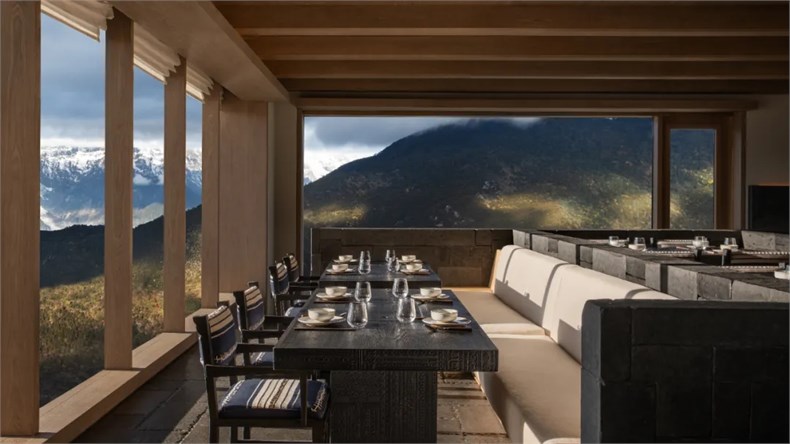
The snowy mountains intermittently come into view, and when one’s gaze catches a glimpse of a secluded corner, the heart silently resonates with the surroundings. This embodies the designer’s interpretation and expression of Oriental aesthetics, awakening the hidden vitality within the spirit of the place.
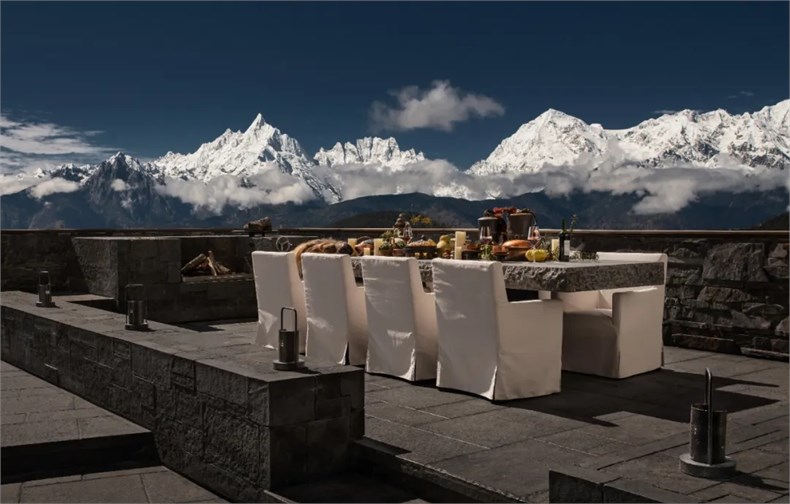
As one moves through these transitions and turns, spaces become tighter and quieter. The unseen snow-capped mountains gradually come into view until they dramatically gather sunlight at their peaks, reflected in the water below. This majestic scenery amplifies nature’s sublimity and awe to an infinite extent.
he architectural design includes several reserved viewing points, which have been meticulously reimagined by Wujian Design to offer a progressively immersive sensory experience. Visitors enter through narrow gaps and follow winding paths to reach the top terrace. A sculpture inspired by Mani piles stands on one side, enhancing the snowy landscape with an additional foreground element. This creates a layered and interwoven visual experience.
